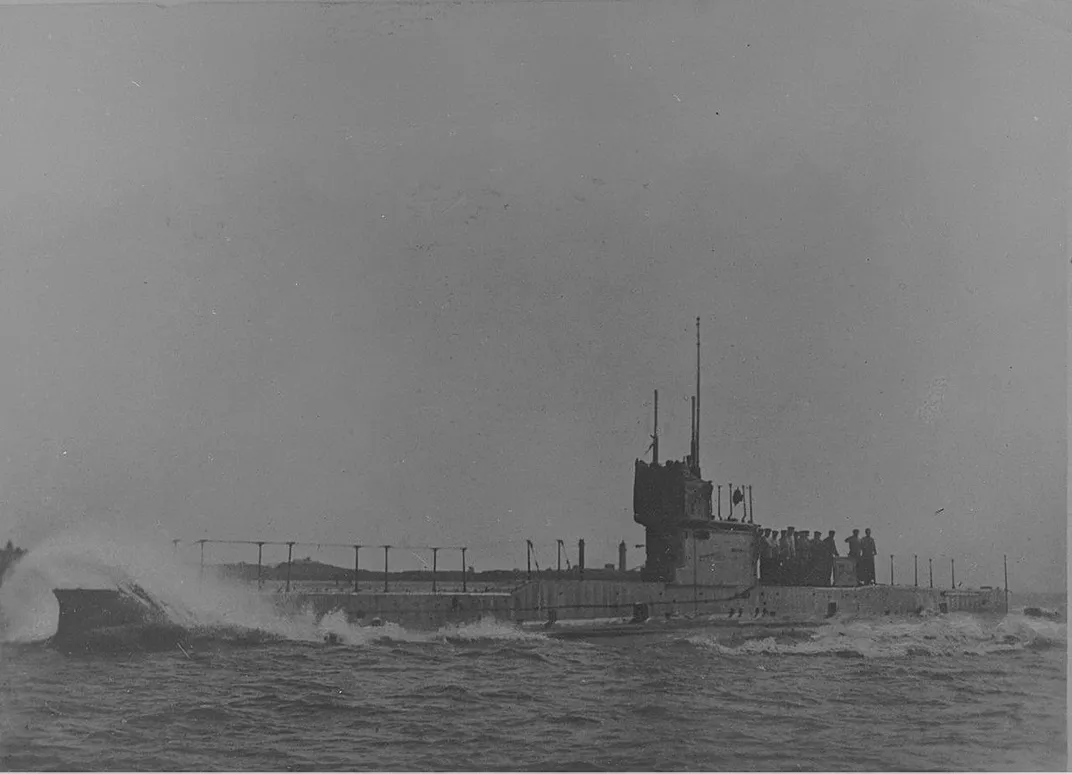After Mysteriously Disappearing in WWI, Australia’s First Submarine Finally Found
The craft disappeared during in heavy haze early in the war
/https://tf-cmsv2-smithsonianmag-media.s3.amazonaws.com/filer/e5/fe/e5fedfd2-1574-4496-a514-9b9ee04e5c04/aussie_sub.jpg)
After 103 years, one of Australia’s most perplexing maritime mysteries has been solved. This week, as Lindsey Bever reports for The Washington Post, a search crew discovered the wreck of HMAS AE1—the first submarine fielded by Australia, which disappeared during World War I while assisting in the capture of German territory on New Guinea, just north of Australia.
The submarine and its companion ship AE2 were deployed in 1914 in the early weeks of World War I and ensured the German surrender at Rabaul in September of that year. But the following day, according to the Australian Navy, the ship headed off to patrol the Duke of York Islands in a heavy haze—and it disappeared into the fog.
The destroyer Parramatta accompanied the sub's companion ship AE2 on this venture, and worked with the ship to keep visual contact with the sub during the patrol. But still, it vanished with 32 crew and 3 officers on board. It was the Royal Australian Navy’s first casualty of the war and first Allied sub lost during the conflict.
As Judith Vonberg at CNN reports, searches for the vessel were brief as personnel was needed elsewhere as the war progressed. But since the 1970s, 13 expeditions have set out in search of the sub to no avail. “When a submarine just disappears, it can be anywhere,” nautical archaeologist Innes McCartney at Bournemouth University tells CNN's Vonberg. “There are hundreds and hundreds (of submarines) on the bottom of the ocean. They are generally chance finds.”
For the most recent search, the Royal Australian Navy teamed up with the the Submarine Institute of Australia, the Australian National Maritime Museum, Fugro Survey and the Papua New Guinea Government, according to a press release. And the team didn't go in without preparation, report Stephen Fitzpatrick and Sam Buckingham-Jones at The Weekend Australian. Expedition leader and retired Rear Admiral Peter Briggs did extensive research and preparation, which allowed his team to find the ship at the first location surveyed.
Last Sunday, the survey ship Fugro Equator used multi-beam echo sounder, side-scan sonar and an underwater drone to survey the seabed, locating an object of interest. They eventually found the sub near the Duke of York Islands in Papua New Guinea in 1,000 feet of water.

Vonberg reports that the team created a 3D rendering of the object and dropped a camera down to confirm that the craft is indeed AE1. The vessel is in surprisingly good shape, and the cause of the sinking is not apparent, but may be discovered after further inspection.
As Fitzpatrick and Buckingham-Jones report, the families of the deceased have been contacted and arrangements are already underway for a wreath-laying ceremony at the site sometime next year. The loss of the AE1 remains vivid for the many people affected by its disappearance. Sixty-six-year-old Robyn Rosenstrauss grew up in the home of her great uncle James Fettes who died on AE1. “His loss was something my grandmother, Margaret Fettes, never got over, and I was very close to her, so I felt it, too,” she says.
The discovery raises hope that searchers can locate several other lost vessels in the area. As Australian Maritime Museum curator Stephen Gapps tells Fitzpatrick and Buckingham-Jones, “with new technologies for underwater searches, there is added hope for the discovery of other similar mysterious wrecks such as HMAS Matafele, lost with all hands in June 1944 between Queensland and Papua New Guinea, or the SS Waratah, lost without a trace in 1909.”